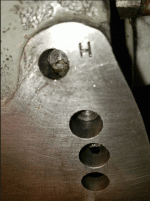Greenlee52
Aluminum
- Joined
- Apr 7, 2020
- Location
- Theodore, AL, USA
I have a pretty good oil leak underneath the rear of my Headstock. If I fill the rear reservoir to the top of the Git it will drain overnight. I don't want to remove the Headstock if I don't have to. My question is does the hold down bolt for the Headstock thread into the reservoir? I have put sealant tape on the threads but maybe it wasn't thick enough. I don't know how thick the bottom of the casting is for the Headstock or if it threads into the oil reservoir. NO leaks in the front at all. Thanks for the help




